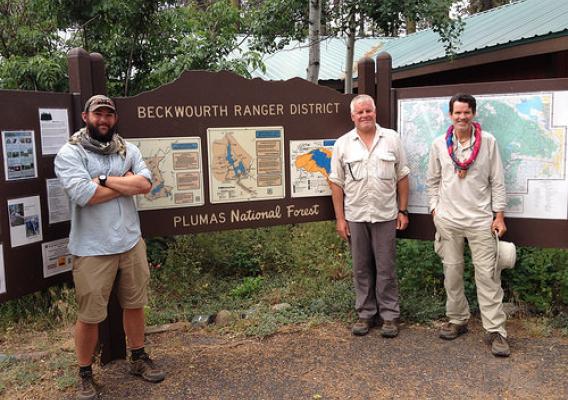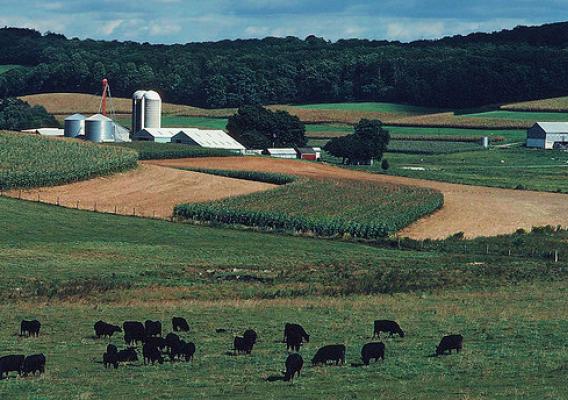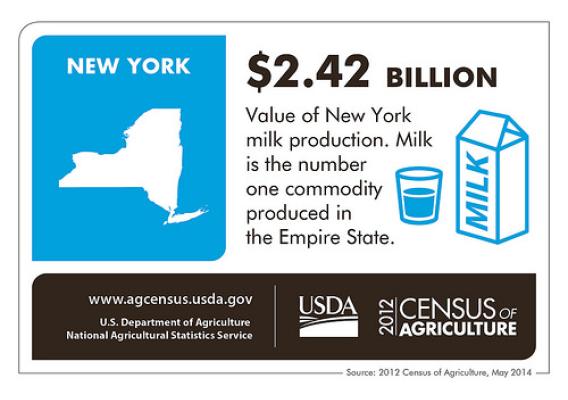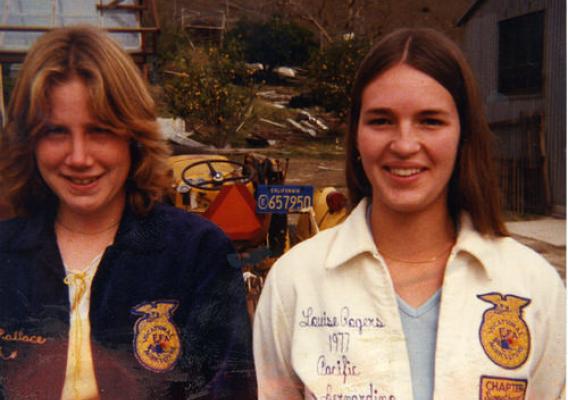The Census of Agriculture is the most complete account of U.S. farms and ranches and the people who operate them. Every Thursday USDA’s National Agricultural Statistics Service will highlight new Census data and the power of the information to shape the future of American agriculture.
According to the 2012 Census of Agriculture, the value of New York’s number one commodity is nearly half the value of all our agricultural products. The value of milk sales, at $2.42 billion, ranks third among all states. This milk is used in the production of many dairy products, with New York ranking number one among states in the production of yogurt, cottage cheese, and sour cream and also ranking high in the production of cheese.
However, because of New York’s varied geography and large size, New York is agriculturally diverse, with many commodities ranking in the top ten nationally. For example, 2,598 New York farms produce fruit on 93,304 acres. New York traditionally ranks second in the nation in apple production with apples grown on 47,148 acres. New York also produces 39,216 acres of grapes, mostly along the moderating climates on the shores of the Great Lakes, Finger Lakes, and Long Island. New York grows grapes both for juice and for wine, and typically ranks third in total grape production.









